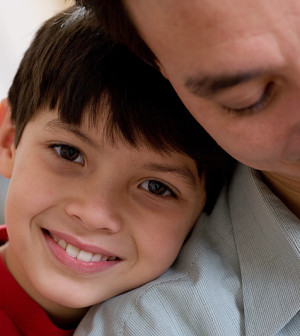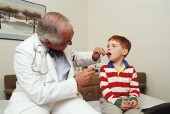- Skip Storing This Everyday Product in the Fridge Door
- Green Tea + B3 Pairing May Boost Brain Health
- Navigating Your Midlife Crisis: Embracing New Possibilities
- City Raccoons Showing Signs of Domestication
- Mapping the Exposome: Science Broadens Focus to Environmental Disease Triggers
- One Week Less on Social Media Linked to Better Mental Health
- Your Brain Changes in Stages as You Age, Study Finds
- Some Suicide Victims Show No Typical Warning Signs, Study Finds
- ByHeart Formula Faces Lawsuits After Babies Sickened With Botulism
- Switch to Vegan Diet Could Cut Your Greenhouse Gas Emissions in Half
Food Is a Common Choking Hazard for Kids, Doctor Says


Although many parents worry about their children choking on small objects or toys, many overlook a common choking hazard: food.
Such was the case for 15-month-old Landon Jones who started to wheeze and cough after eating a handful of nuts.
“At the time, Landon had a cold so it was not obvious if the coughing was related to his illness or choking,” recalled his mother, Ula Jones.
But, it wasn’t a cold. A cashew had become lodged in his windpipe and had to be removed via surgery. Landon has fully recovered, but some children aren’t so fortunate.
“Landon’s situation is surprisingly common,” his surgeon, Dr. Nina Shapiro, a professor of head and neck surgery at the David Geffen School of Medicine at the University of California, Los Angeles, said in a university news release.
“In many kids, the food object passes down to their bronchi where it gets lodged and they present with coughing, wheezing, or even what might appear to be pneumonia. At first, it is not always clear that the child has had a choking incident,” she said.
Researchers estimate that emergency rooms treat more than 10,000 kids a year for food-choking incidents. In some cases, the children die, the study authors noted in the news release. It is estimated that one child dies every five days due to such incidents, they added.
“Young children have underdeveloped swallowing mechanisms, immature teeth and narrow airways which put them at a higher risk for choking on food,” said Shapiro, director of pediatric ear, nose and throat at Mattel Children’s Hospital UCLA. “Plus, the diameter of a child’s airway is about the size of their pinky, so high-risk foods can easily block their tiny airways and prevent their ability to breathe.”
Parents should be especially careful about these foods for kids under 5 years:
- Cheese sticks
- Chewing gum
- Chunks of food (meat, cheese, peanut butter, raw vegetables)
- Dried fruit
- Grapes
- Hard or sticky candy
- Lollipops
- Hot dogs
- Nuts
- Popcorn
- Seeds, such as pumpkin or sunflower seeds
“The good news is that not all high-risk foods should be completely avoided. Many are healthy for young children — as long as they are served in the right form,” Shapiro said.
Vegetables, for instance, should be cooked and cut into small pieces. Peel grapes and cut them into halves or quarters, and spread peanut butter thinly so chunks of food don’t get caught in the windpipe.
Also, experts recommend that an adult be present when young kids are eating, and children should sit up straight and not run around or play when they’re eating.
If a choking child is unable to breathe, call 911 and perform the Heimlich maneuver. The child should see a doctor even if he or she recovers from choking and appears to be fine.
More information
For more about choking prevention in kids, go to the American Academy of Pediatrics.
Source: HealthDay
Copyright © 2025 HealthDay. All rights reserved.










